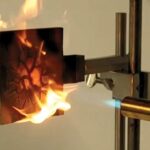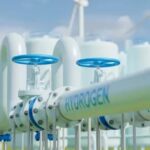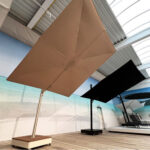The Aachen Graphene & 2D Materials Center has won two projects on basic research and innovation on graphene in the last FLAG-ERA Joint Transnational Call.
FLAG-ERA Joint Transnational Call
FLAG-ERA is a network of national and regional funding organizations in Europe that supports the two first FET Flagship projects of the European Commission: the Graphene Flagship and the Human Brain Project. On November 2018, FLAG-ERA announced its third Joint Transnational Call (FLAG-ERA JTC 2019), with an initial budget of 20 M€. This type of call presents several peculiarities. First, it funds only topics where synergies with the two Flagships are expected. Second, it funds only projects that involve partners form three or more different countries participating to the FLAG-ERA net. Third, while all projects are evaluated “centrally” by an independent evaluation panel, those recommended for funding are funded by the individual funding agencies − meaning that each partner of the project is funded by its national funding agency.
“It might seem a complicated way of financing research”, says Prof. Max Lemme from the chair of Electronic Devices at RWTH Aachen University, “but graphene is a topic that profits enormously from this kind of transnational collaborations.” Lemme is partner of the project 2D-NEMS, together with Prof. Christoph Stampfer − also at RWTH − and with colleagues from the Royal Institute of Technology in Sweden and from Graphenea Semiconductor in Spain.
The first project
The goal of the project is to explore the potential of heterostructures formed by graphene and other two-dimensional materials for realizing ultra-small and ultra-sensitive sensors, such as accelerometers. “We want to understand which combination of 2D-materials works better for a certain type of sensors and why”, says Lemme. “And, most importantly, we want to realize prototypes that are not only good for high-impact publications, but that can be of real interest for industry.”
The second project
Christoph Stampfer, head of II Institute of Physics A, is also involved in the FLAG-ERA project TATTOOS, together with colleagues from UC Louvain in Belgium and CNRS in Paris. TATTOOS is a more exploratory project, dedicated to some of the most fascinating properties of bilayer graphene.
As the name says, bilayer graphene is a material formed by two layers of graphene. One of the big scientific surprises of 2018 was that for certain “magic angles” between the two layers the system can exhibit superconductivity or other exotic properties. “In TATTOOS we’ll use a technique developed by our CNRS colleague, which should allow to rotate dynamically the angle between the layers with the tip of an atomic force microscope.”, explains Stampfer. “Typically, changing the angle requires making a new sample. If they hadn’t already demonstrated this approach on a similar system, I would not believe it can work.”











